Abstract
Homeless people eat foods at municipal and charity run shelters, fast-food restaurants, delicatessens, and from garbage bins. Data on the adequacy of the diets and the nutritional status of homeless persons are sparse. Therefore, nutritional indicators of 55 urban homeless subjects were assessed, and a high prevalence of risk factors was identified. Although 93 percent of subjects reported that they obtained enough to eat, a low dietary adequacy score of 10.1 (norm = 16) indicated that the quality of the diet was inadequate. Diet records showed a high intake of sodium, saturated fat, and cholesterol. Serum cholesterol levels above the desirable limit of 200 mg per dl were prevalent. Anthropometric measurements were significantly different from percentile distributions of the U.S. population (P less than .001). Triceps skinfold measurement was above the 95th percentile in 25 percent of subjects. Upper arm muscle area, which reflects lean body mass, was below the 5th percentile in 23.3 percent of women and 44 percent of the men. These decreased levels of lean body mass and increased levels of body fat, together with the elevated serum cholesterol levels and the shortages of essential nutrients in the diet, may place the homeless at risk of developing nutrition-related disorders.
Full text
PDF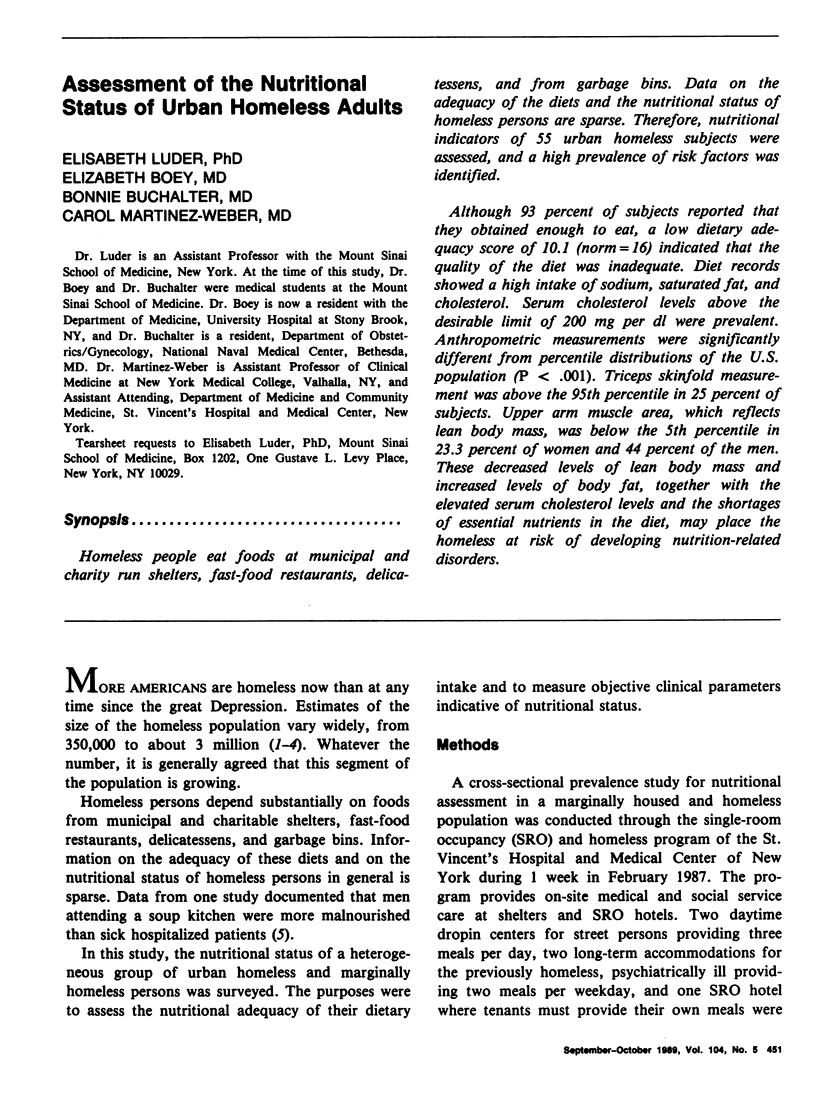
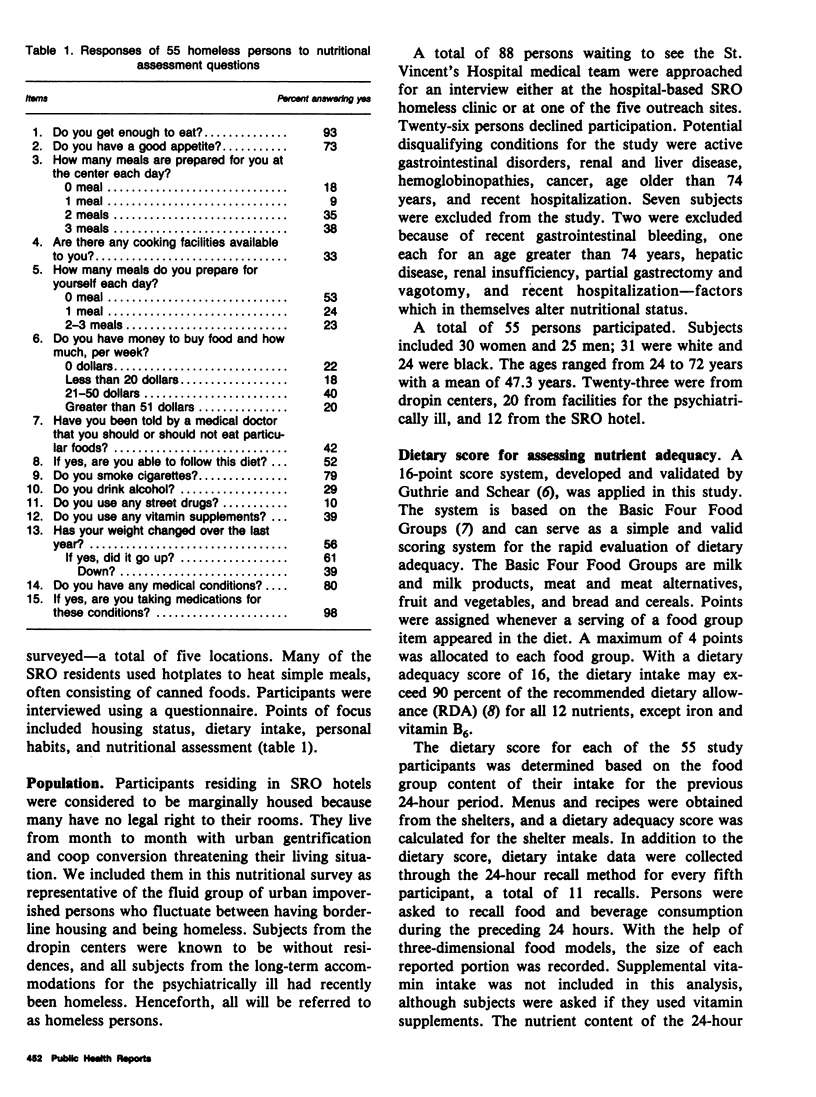
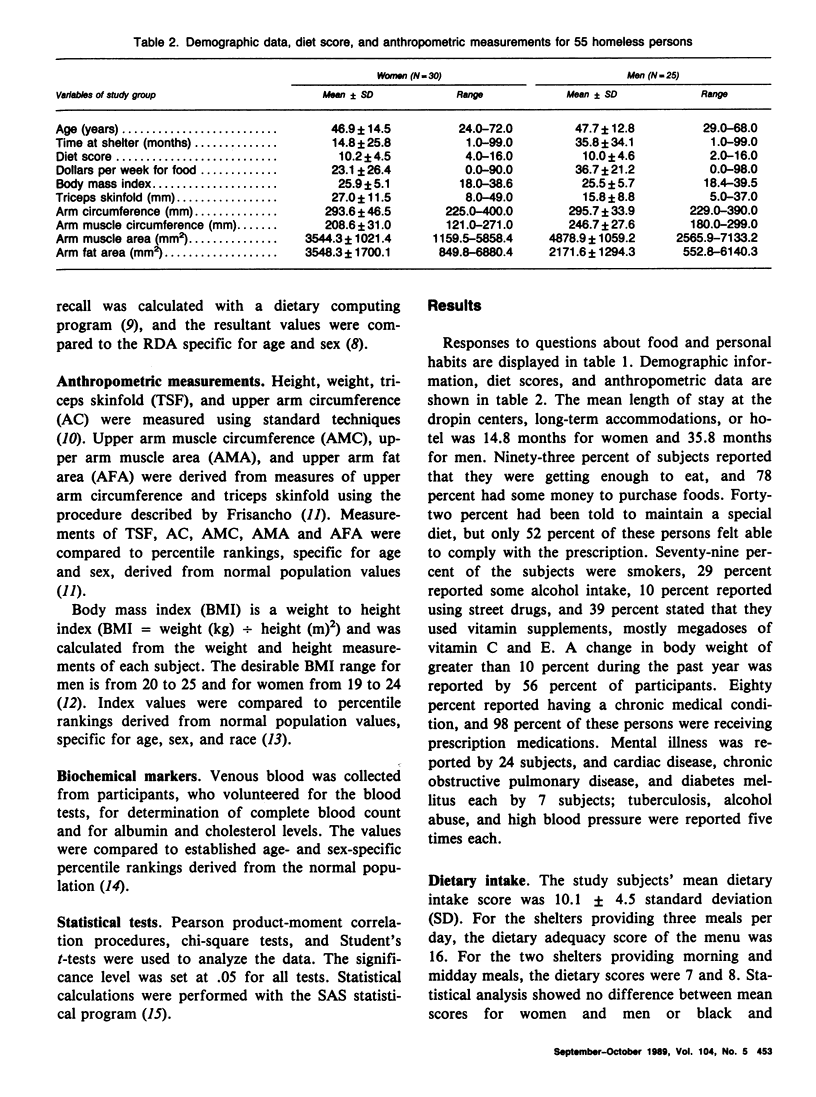
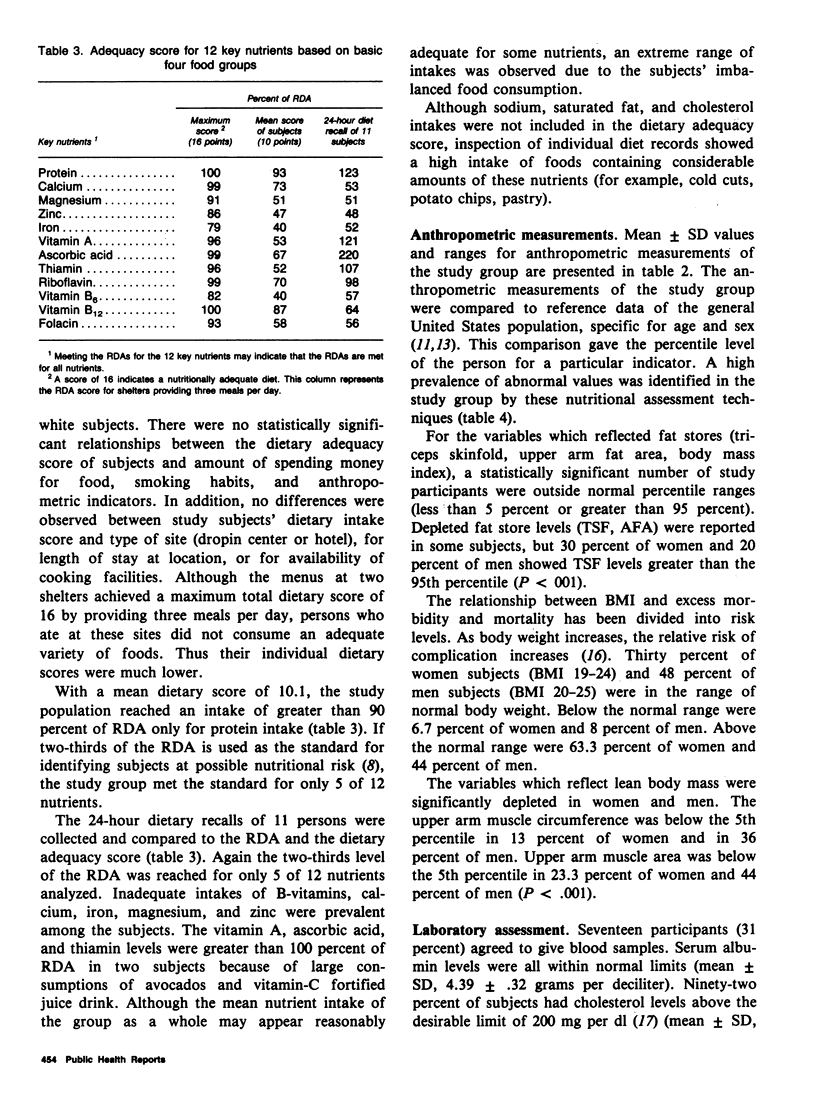
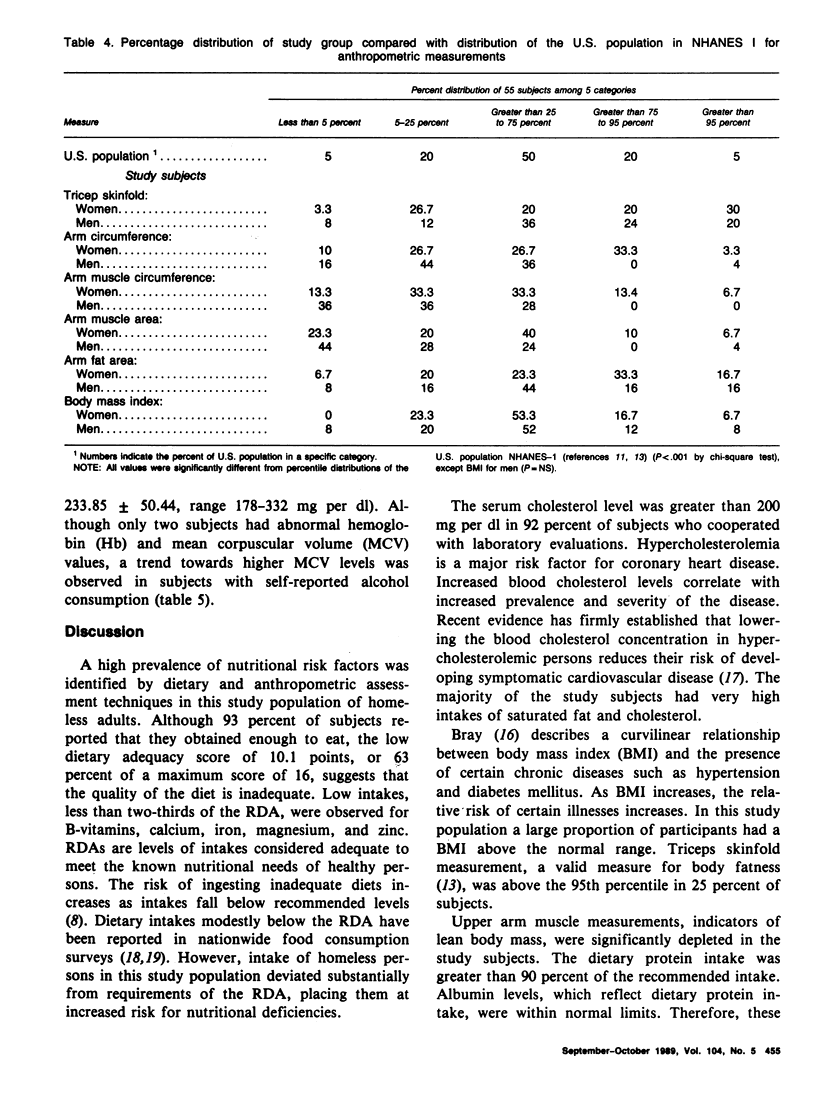
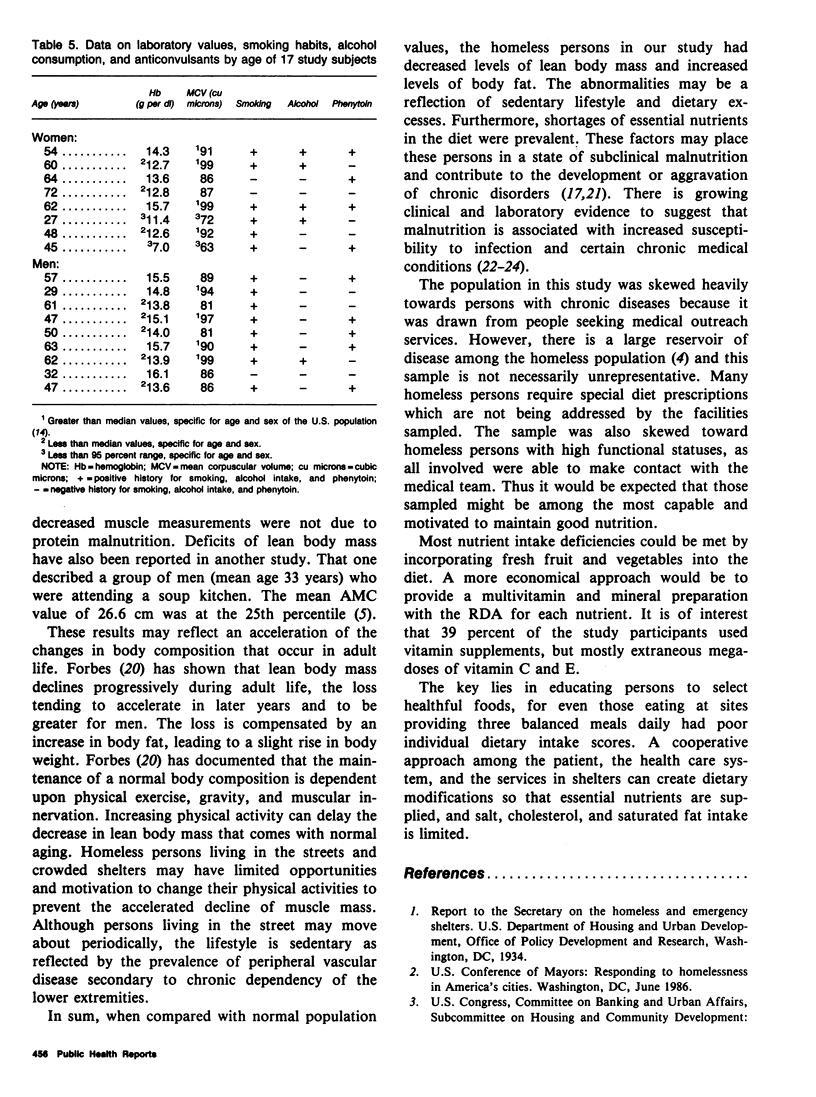
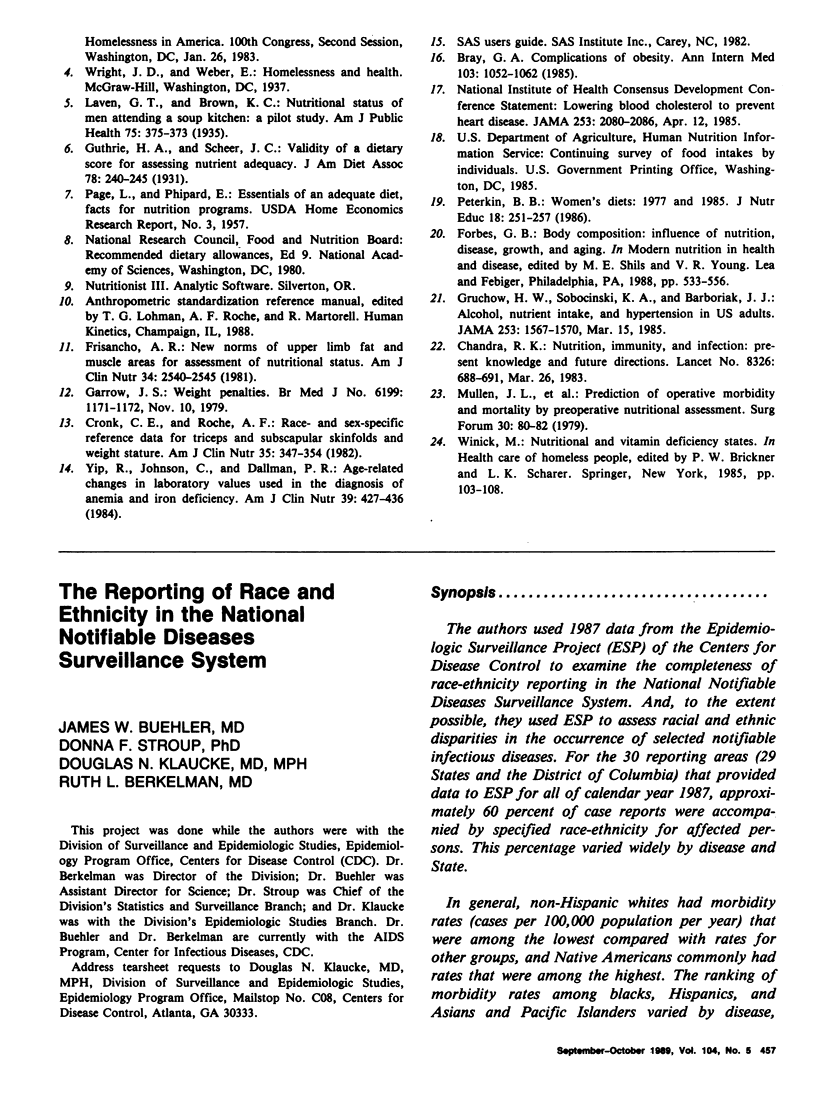
Selected References
These references are in PubMed. This may not be the complete list of references from this article.
- Bray G. A. Complications of obesity. Ann Intern Med. 1985 Dec;103(6 ):1052–1062. doi: 10.7326/0003-4819-103-6-1052. [DOI] [PubMed] [Google Scholar]
- Cronk C. E., Roche A. F. Race- and sex-specific reference data for triceps and subscapular skinfolds and weight/stature. Am J Clin Nutr. 1982 Feb;35(2):347–354. doi: 10.1093/ajcn/35.2.347. [DOI] [PubMed] [Google Scholar]
- Frisancho A. R. New norms of upper limb fat and muscle areas for assessment of nutritional status. Am J Clin Nutr. 1981 Nov;34(11):2540–2545. doi: 10.1093/ajcn/34.11.2540. [DOI] [PubMed] [Google Scholar]
- Gruchow H. W., Sobocinski K. A., Barboriak J. J. Alcohol, nutrient intake, and hypertension in US adults. JAMA. 1985 Mar 15;253(11):1567–1570. [PubMed] [Google Scholar]
- Guthrie H. A., Scheer J. C. Validity of a dietary score for assessing nutrient adequacy. J Am Diet Assoc. 1981 Mar;78(3):240–245. [PubMed] [Google Scholar]
- Mullen J. L., Buzby G. P., Waldman M. T., Gertner M. H., Hobbs C. L., Rosato E. F. Prediction of operative morbidity and mortality by preoperative nutritional assessment. Surg Forum. 1979;30:80–82. [PubMed] [Google Scholar]
- Yip R., Johnson C., Dallman P. R. Age-related changes in laboratory values used in the diagnosis of anemia and iron deficiency. Am J Clin Nutr. 1984 Mar;39(3):427–436. doi: 10.1093/ajcn/39.3.427. [DOI] [PubMed] [Google Scholar]


